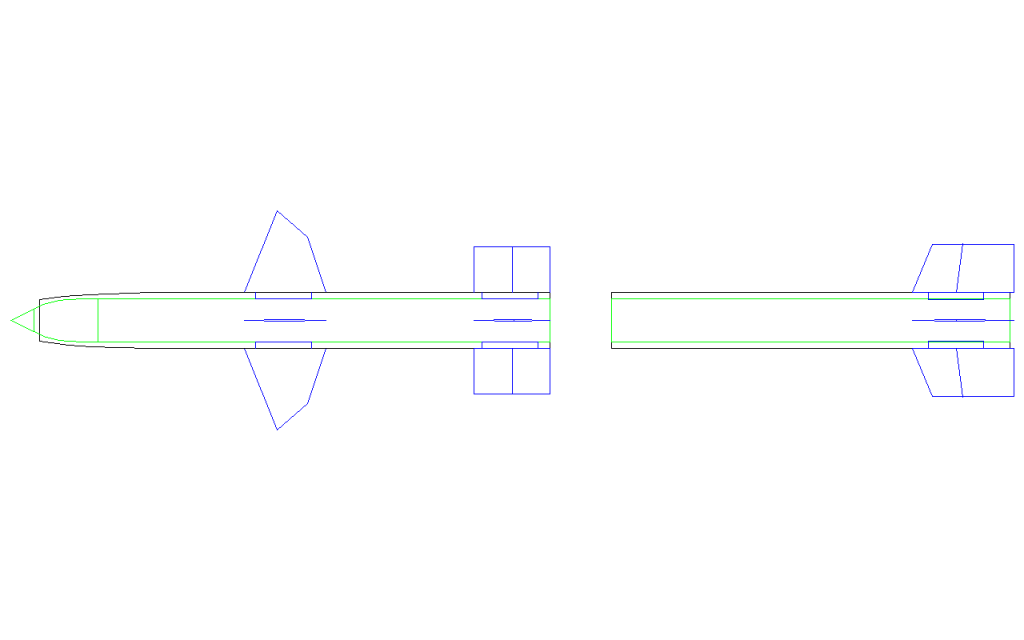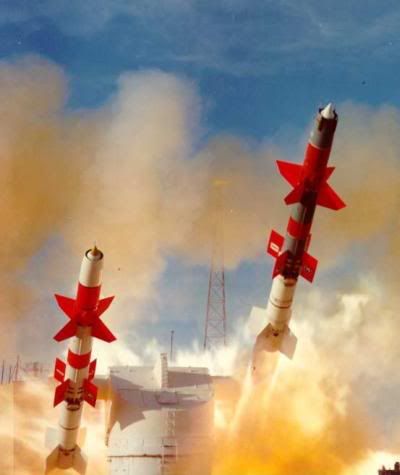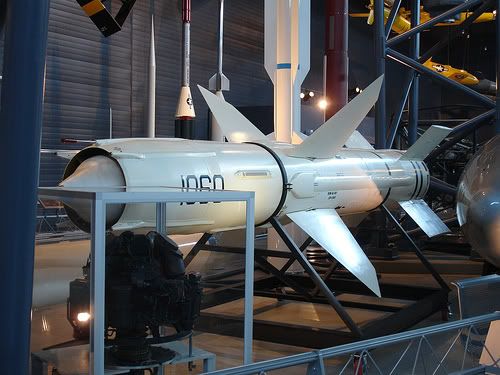El Phantasmo
Well-Known Member
- Joined
- Mar 2, 2010
- Messages
- 359
- Reaction score
- 1
I've decided to build a scale Talos RIM-8 from parts I can purchase. The CAD drawing is my own work. The dimensions (not shown) are not true to scale as they have been rounded off the the nearest 1/16 in. And I came across some conflicting data, but I used the data from the sources I trusted most.
All fins would mount through the 4in "outer body tube" and into but not through the 3in "inner body tube." I don't plan to support the "inner body tube" with anything else but the fins and a coupler where the booster joins. I'm still not sure if this is going to be a single or two stage rocket, and that will influence where the recovery stuff will go.
The curve of the "outer body tube will come from cutting off the ends of a 4in nose cone. The nose cone of the "inner body tube" would be a composite of two modified nose cones, to achieve a truer look. The overall length is about 66in.
Might the "double body" do undesirable/unsafe things in flight?
All comments are welcomed.



All fins would mount through the 4in "outer body tube" and into but not through the 3in "inner body tube." I don't plan to support the "inner body tube" with anything else but the fins and a coupler where the booster joins. I'm still not sure if this is going to be a single or two stage rocket, and that will influence where the recovery stuff will go.
The curve of the "outer body tube will come from cutting off the ends of a 4in nose cone. The nose cone of the "inner body tube" would be a composite of two modified nose cones, to achieve a truer look. The overall length is about 66in.
Might the "double body" do undesirable/unsafe things in flight?
All comments are welcomed.



Last edited:






